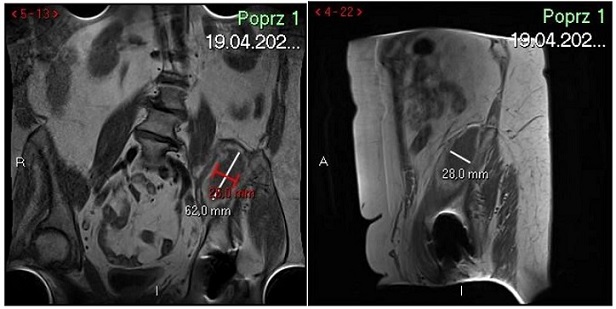COVID-19 News: Insights From A Polish Case Report Shows That SARS-Cov-2 Infections Can Cause Femoral Nerve Palsy Due To Coagulopathy Issues!
Nikhil Prasad Fact checked by:Thailand Medical News Team Dec 08, 2023 1 year, 4 months, 2 weeks, 11 hours, 12 minutes ago
COVID-19 News: As the COVID-19 pandemic continues its relentless march across the globe, researchers are unravelling the intricate web of symptoms and complications associated with this novel coronavirus. Amidst the predominant respiratory manifestations, a recent case report from the Centre of Postgraduate Medical Education, Orthopedic Department in Otwock, Poland, has brought to light a previously unrecognized link between COVID-19, coagulopathy, and femoral nerve palsy. This
COVID-19 News report delves into the nuances of this case, shedding light on the complex interplay between COVID-19 and thrombotic complications, challenging existing treatment paradigms.
 The Expansive Landscape of COVID-19
The Expansive Landscape of COVID-19
Since its emergence in late 2019, COVID-19 has presented a multifaceted challenge to the medical community. Initially characterized by respiratory distress and related symptoms, the virus has proven its versatility by affecting various tissues, leading to a spectrum of clinical manifestations. Beyond the respiratory system, patients have reported diverse symptoms, including olfactory disorders, headaches, and thrombotic events. This diversity underscores the virus's affinity for multiple tissues, resulting in a broad array of symptoms.
Coagulopathy in the COVID-19 Context
The enigma of coagulation disorders in COVID-19 persists, with the underlying mechanisms still not fully understood. Current theories propose dysregulation of the immune system, pro-inflammatory cytokine responses, lymphocytes, hypoxia, and vascular endothelial damage as contributing factors. The medical community has responded by recommending pharmacological thromboprophylaxis as a standard part of COVID-19 treatment. However, this strategy introduces a delicate balance, as clinicians grapple with the challenge of bleeding complications in a subset of patients.
The Illuminating Polish Case Report
The focal point of this exploration is a patient in her 70s with pre-existing conditions including obesity, diabetes, and arterial hypertension, who underwent left hip arthroplasty in May 2019. In March 2021, she tested positive for COVID-19, leading to hospitalization. Despite adherence to standard treatment protocols, the patient developed femoral nerve palsy coupled with an iliopsoas hematoma. This unexpected twist challenges conventional understanding, particularly as coagulation parameters remained within normal ranges, and thromboprophylaxis was discontinued during hospitalization.
Management and Evolving Recovery
Contrary to immediate surgical intervention, the patient underwent non-operative treatment, marking a departure from traditional approaches to similar cases. Subsequent follow-up examinations revealed a gradual reduction in the size of the hematoma. The integration of physical therapy and rehabilitation emerged as pivotal components of the patient's recovery, emphasizing the significance of individualized care for COVID-19 patients susceptible to thrombotic complications. Neurological assessments and imaging studies showcased remarkable improvement, culminating in the patient regaining full limb function.<
br />
Elevating the Discourse on Bleeding Complications
While existing literature predominantly highlights the heightened risk of clotting in COVID-19 patients, the aspect of bleeding complications remains a less explored domain. The presented case aligns with prior studies indicating a 4.8% incidence of bleeding complications in COVID-19 patients. Contributing factors include the use of low-molecular-weight heparin (LMWH) and autoimmune thrombocytopenia (ITP). However, the current case introduces a compelling narrative, as the patient experienced femoral nerve palsy with only prophylactic LMWH and no evidence of ITP.
Limitations and Future Horizons
Acknowledging the intricacies of the case, the study emphasizes its limitations, notably the absence of serological or genetical tests for congenital coagulopathy. The authors propose that future studies should delve into these unexplored territories, aiming to establish correlations between COVID-19 and congenital coagulopathies. Such insights would contribute to a more comprehensive understanding of the disease's impact on the coagulation system.
Conclusion
The Polish case report injects a unique perspective into the ongoing discourse on COVID-19-related coagulopathy. The intricate interplay between the virus and the coagulation system, exemplified by femoral nerve palsy in the absence of standard risk factors, necessitates a reevaluation of thromboprophylaxis strategies. Tailoring treatment approaches based on individual thrombosis risk factors in COVID-19 patients becomes imperative, urging clinicians to exercise caution in prescribing anticoagulant medications.
As the medical community grapples with the evolving complexities of COVID-19, this case serves as a catalyst for further research, driving the need to unravel the enigma surrounding the virus's impact on bleeding complications. By elevating the discourse on this less-explored aspect, the article contributes to the ongoing effort to refine patient care and treatment strategies in the face of this global health challenge. The quest for a deeper understanding continues, prompting researchers and clinicians alike to delve into uncharted territories and unearth the intricacies of COVID-19's impact on the coagulation cascade.
The case report was published in the peer reviewed journal: BMC Musculoskeletal Disorders.
https://bmcmusculoskeletdisord.biomedcentral.com/articles/10.1186/s12891-023-07062-w
For the latest
COVID-19 News, keep on logging to Thailand Medical News.
